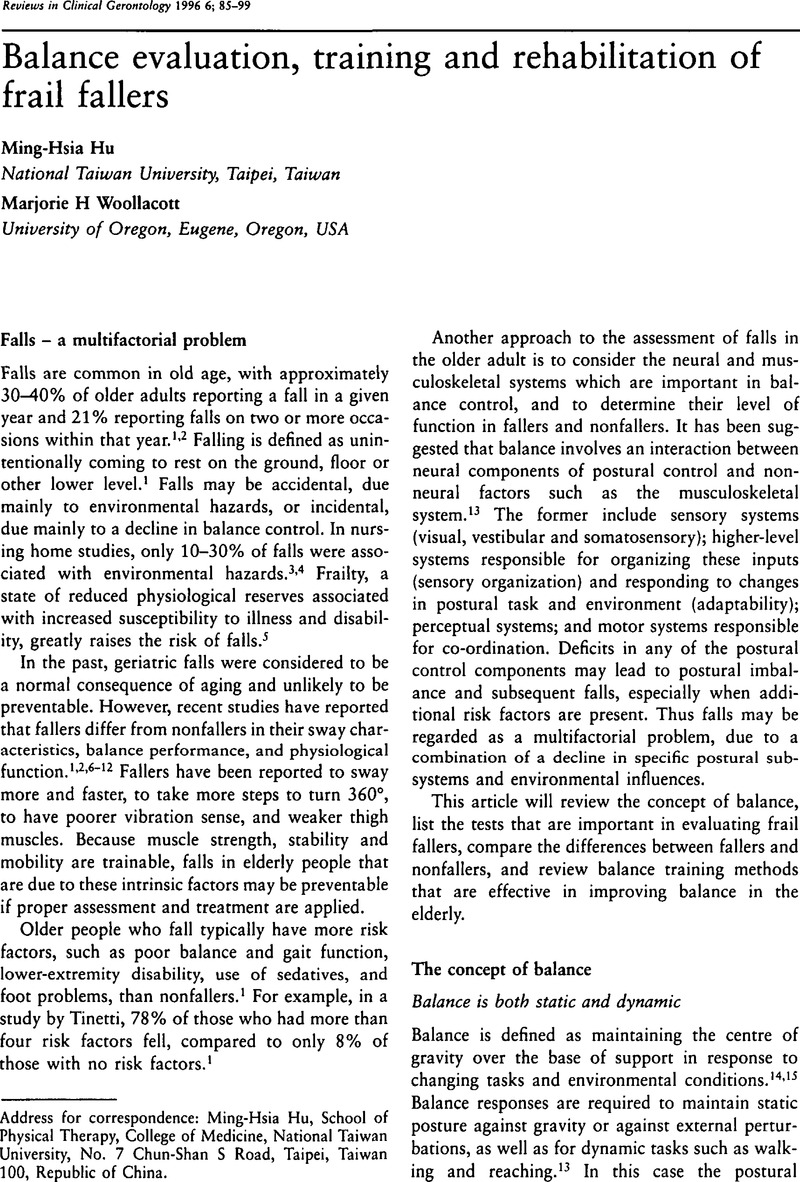Crossref Citations
This article has been cited by the following publications. This list is generated based on data provided by Crossref.
Cowley, Anne
and
Kerr, Kate
2001.
Amputees and Tightropes: A Pilot Study to Measure Postural Control Post-Amputation.
Physical Therapy Reviews,
Vol. 6,
Issue. 1,
p.
5.
Araújo, Marina Lorenzi Monteiro de
Fló, Claudia Marina
and
Muchale, Sabrina Michels
2010.
Efeitos dos exercícios resistidos sobre o equilíbrio e a funcionalidade de idosos saudáveis: artigo de atualização.
Fisioterapia e Pesquisa,
Vol. 17,
Issue. 3,
p.
277.
Lustosa, Lygia Paccini
Marra, Tais Almeida
Pessanha, Fernanda Pinheiro Amador dos Santos
Freitas, Juliana de Carvalho
and
Guedes, Rita de Cássia
2013.
Fragilidade e funcionalidade entre idosos frequentadores de grupos de convivência em Belo Horizonte, MG.
Revista Brasileira de Geriatria e Gerontologia,
Vol. 16,
Issue. 2,
p.
347.
Itakussu, Edna Yukimi
Valenciano, Paola Janeiro
Trelha, Celita Salmaso
and
Marchiori, Luciana Lozza de Moraes
2015.
Benefícios do treinamento de exercícios com o Nintendo(r) Wii na população de idosos saudáveis: revisão de literatura.
Revista CEFAC,
Vol. 17,
Issue. 3,
p.
936.
Porto, Elias
Pimentel, Thais de Oliveira
Bernardes, Fabiano A
Camargo, Ana Carla
and
Kumpel, Claudia
2020.
EFEITOS DA ATIVIDADE FÍSICA INESPECÍFICA SOBRE O EQUILÍBRIO CORPORAL EM IDOSOS.
Life Style,
Vol. 6,
Issue. 2,
p.
73.



